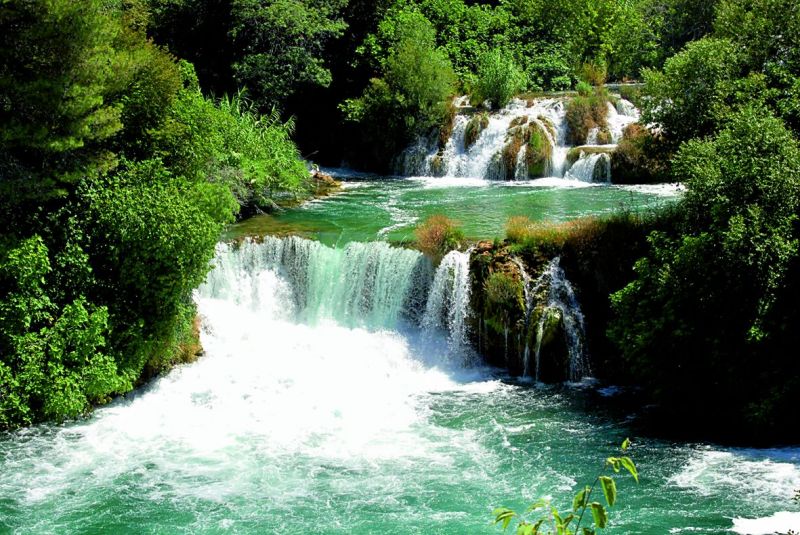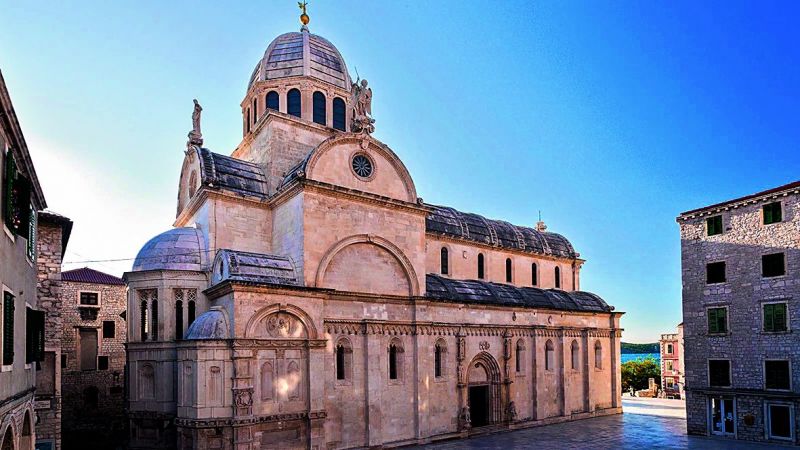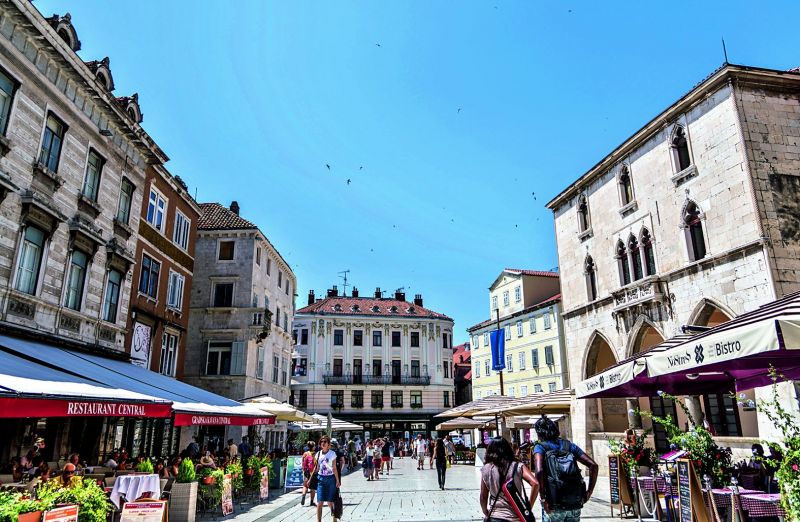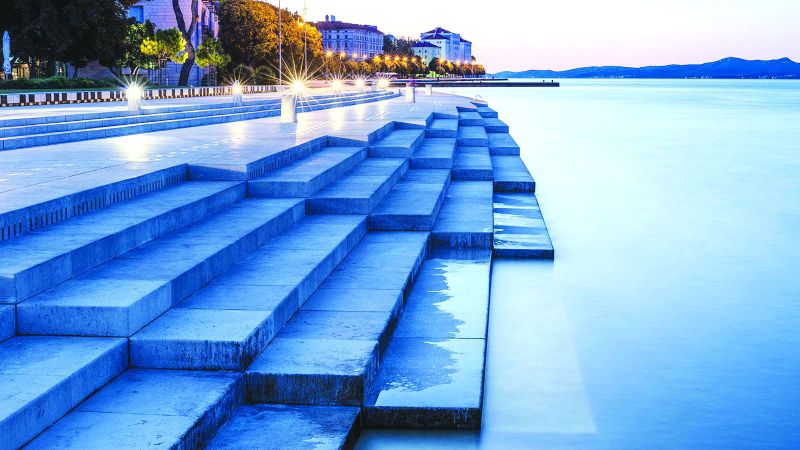Exploring Dalmatia, the soul of Croatia
No trip to Croatia is complete without exploring one of its 1,000 islands, offering a wide range of experiences.

Croatia is by no means a large country but it has so much to offer that it is only fair to explore it as slowly as one can. Roughly divided between continental Croatia and the Adriatic Coast, the most spectacular parts of the country are on Dalmatia. Dalmatia is a narrow belt of the east shore of the Adriatic Sea, stretching from island of Rab in the north to the Bay of Kotor in the south. Seventy-nine islands (and about 500 islets) run parallel to the coast, the largest is in Dalmatia, Pag and Hvar. The largest city is Split, followed by Zadar, Dubrovnik and Šibenik. Bound by the stunning Adriatic Sea on one side, and the Dinaric mountains on the other, this area has everything you can possibly ask for on a holiday: gorgeous beaches, towns with a very rich history going back to the Roman times, great nightlife, and stunning fresh seafood.
 Krka National Park.
Krka National Park.
It is hard to talk about the Adriatic Coast in Croatia and not start with Dubrovnik or Ragusa as it was called in antiquity. The city was a long standing rival of Venice when City States ruled the roost in Medieval and pre-Renaissance Europe. The Pile Gate is the traditional entry point to this city that retains its heritage. If you happen to be a fan of the TV adaption of George R.R. Martin’s Game of Thrones, you would know that King’s Landing is Dubrovnik with just a few cosmetic changes. Walking the walls of Dubrovnik is the essential activity when in the city. If you like physical activity, I would advise you to go for a sea kayaking tour in a three-hour journey around Lokrum island. It’s a great way to workout while exploring your destination from a totally different perspective. You can drive up the coast from Dubrovnik and stop by Makarska.
 Makarska Street.
Makarska Street.
Travellers often overlook Makarska, and head straight for the islands, but the Makarska Riviera on the mainland coast, between Split and Dubrovnik, is home to some of the country’s loveliest beaches. Running from Brela in the north to Gradac in the south, the Riviera is 38 miles long and centres on Makarska. Makarska itself is built around a deep sheltered bay, and backed by the dramatic rocky heights of Mount Biokovo. Biokovo’s sea-facing slopes are crisscrossed by well-marked trails, so besides swimming in the deep turquoise Adriatic, it’s possible to get in some hiking or mountain biking as well.
 Sibenik Cathedral.
Sibenik Cathedral.
Up the coast from Makarska is Split — the second-largest city of Croatia and the largest city of the region of Dalmatia. Home to Diocletian’s Palace, built for the Roman emperor in 305 CE, the city was founded as the Greek colony of Aspálathos. It became a prominent settlement around 650 CE when it succeeded the ancient capital of the Roman province of Dalmatia, Salona. While the Old Town is not huge, the Diocletian’s Palace itself is impressive and the streets around it seem straight out a medieval movie. Well, to be clear, the whole old town is part of the Palace, so we’re technically talking about a huge fortress here. If possible, allow yourself to sit on the staircase in the Peristil (the main square) and take it all in. Where else can you have a drink or a meal completely surrounded by Roman ruins?!
 Sibenik Market Place
Sibenik Market Place
No trip to Croatia is complete without exploring one of its 1,000 islands, offering a wide range of experiences. Choosing which island to visit, highly depends on your travel goals: if you seek clubbing and drinking, head to Hvar, known as the fashionable and party island. If you are more interested in watersports, Brac is a great choice for parasailing and windsurfing. You will not want to miss the Zlatni Rat beach, as well as other stunning coves and bays in the island. For organic food and drinks (including wines), head to Vis or Korcula. The Kornati or Mljet archipelagos are best known for their unspoiled nature. If you keep traveling up the coast from Split after visiting the islands, you will get to Sibenik. While Dubrovnik and Split have become well-known tourism destinations, other pearls of Croatia’s beautiful Dalmatian Coast remain off all but the most-intrepid travellers’ radars. One such secret is Sibenik. How many cities do you know of that boast not one but two UNESCO World Heritage Sites, The Cathedral of St. James and the fortress of St. Nicholas, both Game of Throne’s locations.
 Diocletian Palace Northern Wall
Diocletian Palace Northern Wall
Less than 15 km away from Sibenik is the Krka National Park. It is one of the major national parks in Croatia. It hosts unchanged natural views, lots of hiking trails and an impressive set of waterfalls. Krka is also more interactive: you can actually swim in the (cold) waters near the main waterfalls! For us the last stop on this coastal journey was Zadar. It is a city on Croatia’s Dalmatian coast, is known for the Roman and Venetian ruins of its peninsular old town. There are several Venetian gates in the city walls. Surrounding the Roman-era Forum is 11th-century St. Mary’s Convent, with art dating to the 8th century. There’s also the 12th-century St. Anastasia’s Cathedral and the round, 9th-century pre-Romanesque Church of St. Donatus. On the western end of the coastline of Zadar (Riva), you’ll find the Sea Organ (Morske orgulje). It’s an unusual seaside audio installation shaped into the form of several marble steps that descend into the Adriatic. Just a few steps away, the Sun Salutation installation is a circle of LEDs and photovoltaic cells that come alive at night to create the most colorful sunset. These two experiences make Zadar worth a visit like the rest of Dalmatia.
Krka National Park.Makarska Street.Sibenik Cathedral.Sibenik Market PlaceDiocletian Palace Northern Wall
